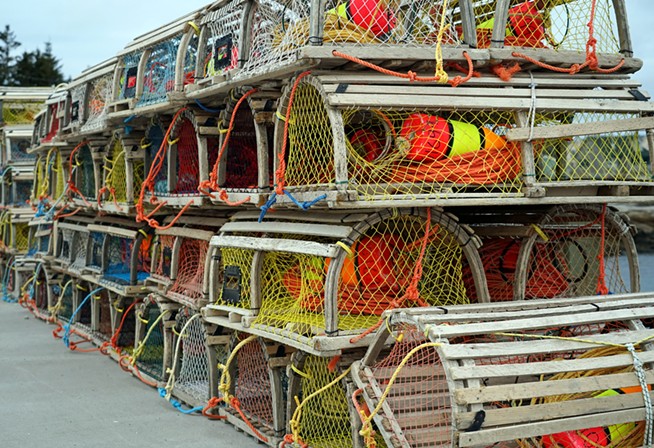It’s a blustery November morning, and Nikki Gullett has her binoculars trained on the whitecapped waters off the edge of Cow Bay. An avid bird watcher, she’s been tracing the path of a possible red-throated loon, one of the more than 300 bird species found at Hartlen Point, a rocky and dune-covered outcrop at the southeastern tip of Eastern Passage. It’s the birds that bring her here: Purple sandpipers flit on the rocks above the crashing Atlantic waves, while snowy owls and peregrine falcons hunt for prey. The site is “one of the best mainland migrant traps in Nova Scotia,” according to the Nova Scotia Bird Society; and the 10th most biodiverse bird habitat in Canada, according to eBird, a global crowdsourced inventory of bird species and where to find them.
Gullett isn’t the only one drawn to Hartlen Point’s windswept shoreline. Surfers, hikers and lobster fishers—not to mention deer, rabbits, bobcats and harbour seals—all frequent the rocky oceanfront, the neighbouring tidal estuary and the waters offshore.
But all of that may change soon. Canada’s Department of National Defense manages the Crown-owned land and wants to develop it. The DND has designs for a $65-million facility, deemed “critical” in preparing its eventual warship fleet’s “combat systems” through “rigorous tests and trials.” The military has plans for a 9,000-square-metre building, big enough to fit 120 full-time staff, including members of the Royal Canadian Navy and DND employees.
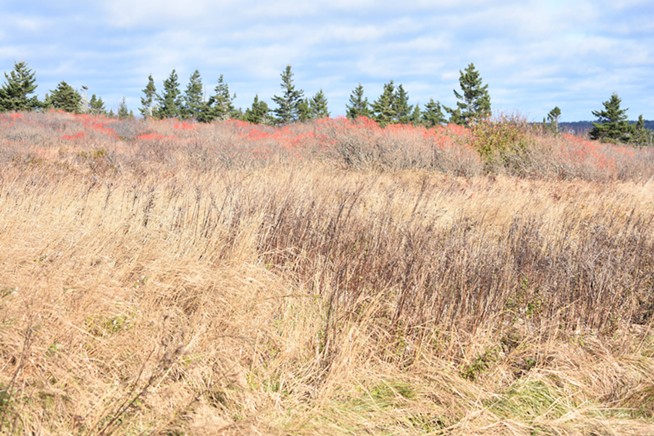
Gullett worries the facility and its high-power radio emissions would irreversibly harm Hartlen Point’s rare and sensitive ecosystem and the many species that call it home. She’s not alone. More than 16,000 people have signed an online petition calling on federal decision makers to move the military testing site and pledge “total cooperation” to maintaining the ecosystem as-is.
“If we can’t go on this land because of frequencies, what does that mean for us? What does that mean for the nearshore waters?” - Nikki Gullett, Protect Hartlen Point
tweet this
There are fears the facility’s environmental effects could ripple far beyond the point—from jeopardizing the nearby lobster fishing industry to potentially harming those who live nearby.
“Once it’s gone, you can’t get it back,” Gullett tells The Coast. “Once this place is developed… it will not return to what it was.”
‘The big problems are not being addressed’
Tony Rusinak lives and breathes Hartlen Point. He’d been a regular visitor for decades before he moved to the area in 2020. As a coastal hiker and surfer, he loves the waves and how they arrive, without end, from the open Atlantic Ocean.
“It’s a wild place. It’s the very end of the road,” he says, speaking by phone with The Coast. “It’s where the birds are. It’s where fishermen go. It’s where surfers go. And more recently, cyclists, hikers and dog walkers.”
Some come for the birds and monarch butterflies; others, for the glimpse of open ocean. Because of Hartlen Point’s exposure, Rusinak explains, it’s the only place on the east side of the Halifax Harbour where Haligonians can see the sunrise from the horizon. But he fears what radio emissions from a naval testing facility would mean for his favourite surf spot—and beyond that, his home.
A 2021 site analysis report commissioned by the DND and obtained by the Protect Hartlen Point campaigners through a Freedom of Information request cautioned that “long-term operation of emitters” could cause “potential adverse impact to the populous health and safety.” That information doesn’t appear on the DND’s website or its impact assessment registry.
“Anyone with half a brain looking at this would say this is going to destroy Hartlen Point as a critically important birding area; it will decimate that habitat and it will kill birds.” - Tony Rusinak, Hartlen Point resident
tweet this
“The big questions, the big problems are not being addressed,” Rusinak says. “This is a 9,000 square metre, 25 metre tall, high-powered radio frequency-emitting warship testing facility… Anyone with half a brain looking at this would say this is going to destroy Hartlen Point as a critically important birding area; it will decimate that habitat and it will kill birds.”
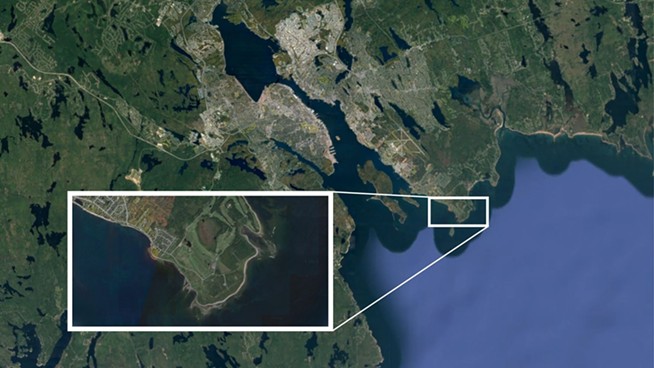
Rusinak says he and others have reached out to the DND for answers on what health risks exist to those nearby, but “they are not revealing anything.” He and Gullett have been calling for a third-party environmental impact assessment to determine whether the DND’s plans are suitable for Hartlen Point.
“If we can’t go on this land because of frequencies, what does that mean for us? What does that mean for the nearshore waters?” Gullett asks.
In an emailed statement to The Coast, a DND spokesperson—who does not identify themselves by name—says that an environmental assessment is “currently underway,” and that the DND has asked its environmental consultant “to perform additional studies looking at migratory birds and owls in the area.” The spokesperson adds that Canada’s armed forces expect early results from that assessment “in the coming months.”
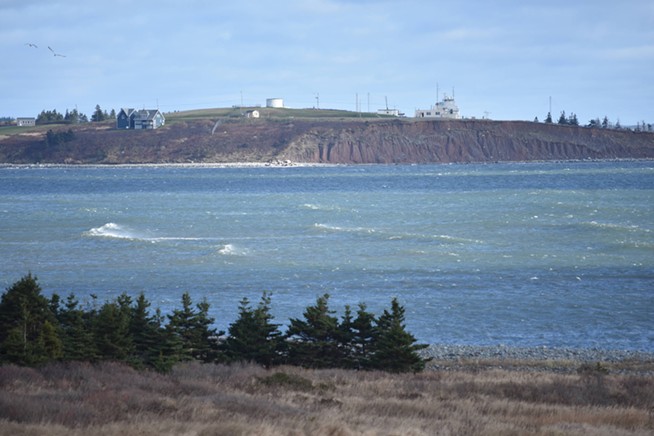
The Coast asked the DND if it would elaborate on who is performing the environmental assessment and whether it would consider another site if that assessment found significant risks with Hartlen Point. The DND says three “independent third parties,” SNC, CBCL and PCL Construction, have been carrying out environmental studies in “soil, groundwater and wildlife,” and that it “wouldn’t speculate on how the environmental assessments will impact siting,” as those decisions will be made “once the [assessment] results are available.” Those results are expected in winter 2023.
A DND spokesperson also says five sites had been under consideration for the testing facility, including Bedford Basin, Ferguson’s Cove, Osborne Head and CFB Halifax - Stadacona, but that Hartlen Point was their preferred site given its coastal location, the fact that it’s DND-managed, and that it “meets our security requirements and provides adequate space for all of this facility’s systems in one location.”
Facility intended for testing features of 15 new combat ships
The reason for the DND’s interest in Hartlen Point is combat ships. Canada’s maritime fleet is aging, the Navy argues: More than half of its 12 Halifax-class patrol frigates (dubbed the “backbone” of the Canadian Navy) are 30 years old, and its four Iroquois-class destroyers, launched in the 1970s, have been out of commission since 2017. (The average lifespan of a vessel, according to Canadian shipbuilding engineers SSI, is “between 30 and 50 years.”)
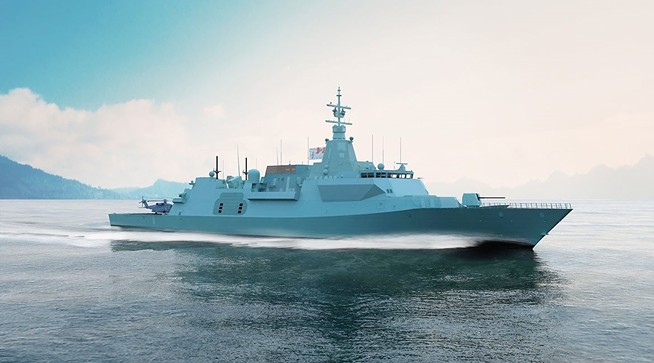
Ottawa’s well aware. In 2011, under former prime minister Stephen Harper, Canada launched a national shipbuilding program to shore up its naval and Coast Guard fleets. Central to that plan are 15 so-called Canadian Surface Combatant ships, described as Canada’s “major surface component of maritime combat power.” Both Lockheed Martin and Irving are leading the design and build of the ships. Those CSCs were announced at an estimated cost of $56-60 billion (a figure that still appears on the Government of Canada’s website), but Canada’s parliamentary budget officer believes the final project could run $77.3 billion and rise to $79.7 billion if there’s a one-year construction delay, for a cost of more than $5 billion per ship. (It bears mentioning that Canada has committed about $4 billion to address homelessness since 2019 and about $53 billion for climate action since 2020.)
The DND sees Hartlen Point as “critical to ensuring the new ships are ready” and a “one-of-a-kind facility” that will “foster innovation and support sustainable growth in Canada’s marine industry.” The Navy’s official Atlantic newspaper, The Trident, claims that the project will bring an estimated 350 jobs to Halifax through its construction phase.
But the real purpose is testing the warships’ combat and communication systems, and ensuring they work as advertised. Hartlen Point fits the bill, the DND says, because it offers 130 degrees of ocean exposure to transmit “safe, government-regulated emitters.” Construction is set to begin in 2023.
‘Come down and tell us how this affects us’
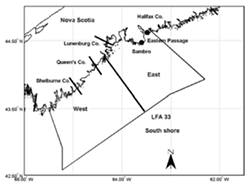
Craig Hartlen has been fishing lobster off the coast of Hartlen Point for 26 years. He’s one of the roughly 718 license-holders for Lobster Fishing Area (LFA) 33, a nearly 26,000 square kilometre stretch of ocean that extends from Cow Bay to Port La Tour.
He was in attendance at the Hartlen Point Golf Course when the DND held its first—and only—public information session in March 2022. Hartlen recalls a spokesperson telling those gathered it would be “too dangerous” to kayak along the shore once the warship testing facility was built.
“I fish up along there,” he tells The Coast, “and I was like, ‘Well, how can you do that?’ People live and work here, and we were never told anything.”
The DND filed an impact assessment registry about its plans in January 2021 and provided an online feedback portal, but Hartlen takes issue with how it was done. Opportunity for online feedback closed on Jan. 26, 2021. There were no door-to-door visits or flyers, and no public engagement sessions for 15 months. Most of the early reporting came from the military’s newspaper—“so we never really heard,” Hartlen says. (“They are following the rules, but doing the absolute minimum,” Rusinak adds.)
Hartlen worries what a warship testing facility and its radio emissions would mean for his livelihood—and the well-being of Nova Scotia’s lobster supply. According to the Department of Fisheries and Oceans, LFA 33 is the second-most lucrative lobster fishing area in all of the Maritimes, bringing in more than $125 million of lobster in 2016-17. (SaltWire reports that in 2020-21, LFA33 license-holders hauled a combined 7,125 tonnes of lobster worth nearly $139 million.) The cost of a license isn’t cheap either: Commercial lobster fishers might spend anywhere from $800,000 to $3 million on a single license. For a lobster fisher, losing access to their traps could spell financial ruin.
If the DND told lobster fishers to go elsewhere—or even rendered part of LFA 33 off-limits—Hartlen says it’s not as simple as moving his traps to another location.
“That’s where the lobsters go to spawn,” he tells The Coast, “and that’s where we fish them. There’s no other spot for us, unless they’re going to buy me a license for a different area.”
“That’s where the lobsters go to spawn, and that’s where we fish them. There’s no other spot for us, unless they’re going to buy me a license for a different area.” - Craig Hartlen, lobster fisher
tweet this
The DND tells The Coast that engagement on Hartlen Point “has been ongoing, in various formats, according to the progress of the project,” and adds that at this stage, planners “still have extensive design work to complete before we know specifics of the facility and its exact location.” A DND spokesperson says the military has been working to ensure the facility “has all necessary licenses and authorities to operate safely at Hartlen Point,” and that its radiofrequency emissions are guided by safety codes that require any emissions to “remain within their safety limits” and not “adversely affect the health and safety of personnel in the surrounding environment.” That sits at odds with the 2021 site analysis report.
Hartlen says his hope is for somebody from the DND to “come down and tell us how this affects us—like, really get it out there in the public eye… And actually, for them to be honest—not to beat around the bush.”
He says those specifics would help him to do his job—and beyond that, to know if his livelihood is at risk: “Tell us that we’re gonna be safe; that all the fish are going to be safe.”
Concerns are with site, not DND
Rusinak didn’t picture himself wading into activism when he moved to Hartlen Point in 2020. He’d rather be surfing.
“I don’t want to be wasting my precious free time and weekends researching it and writing emails, but it’s a necessary reaction because I live here,” he tells The Coast.
He’ll be rallying, along with others, outside Dartmouth-Cole Harbour MP Darren Fisher’s office on Saturday (noon-2pm, 82 Tacoma Drive). He and others are calling for the DND’s facility to be moved to another location. He feels that if “everybody knows the full story… that the right decision will be made. But right now, there is a lot of gray area and glossed-over details.”
“We have no problem with the DND being here. Nobody has a problem with the DND. I’m surrounded by military families and military friends… We want them to do their jobs,” Rusinak says. “But the fact that they have chosen this site for this project is infuriating and upsetting. And it’s wrong.”


